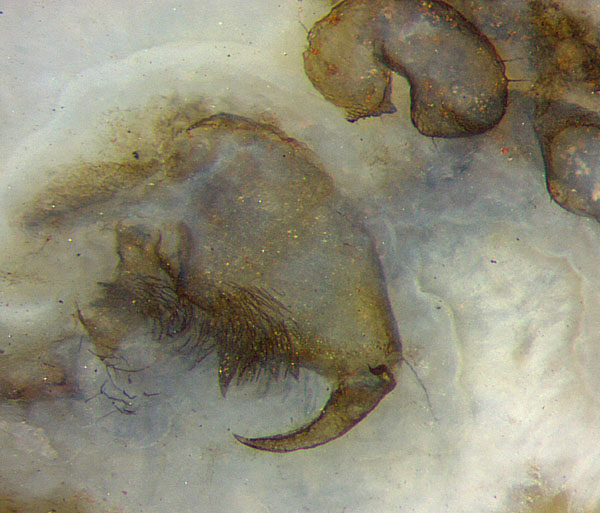Hairs on trigonotarbid mouth parts

Trigonotarbids resemble spiders not only in their aspect and
their predatory way
of life but assumedly also in their eating habits. They are supposed to
not really eat their
prey but liquefy the eatable parts and
imbibe the nutrient-rich liquid, as it is known from spiders [1].
Variously
arranged hairs near the
mouth are sometimes interpreted as filtering systems preventing solid
prey fragments from entering.
Attention
is drawn here to the fact that there is another effect of hairs
arranged in a brush-like way: They can ease the handling of
liquids, which is important with sub-mm-size phenomena like the
small-scale transport of liquid considered here, where surface tension
is the dominating
force. The trigonotarbid
must not get soiled by the sticky liquid, be
it as separate droplets or as a fluid layer on
the partially liquefied prey [1].
Suitably arranged
hairs with non-wetting surface can
keep the liquid
at a distance from the body and thus prevent
contact.
Image:
Sharply pointed fang (chelicera)
of a Devonian trigonotarbid, nearby
hairs probably facilitating the transport of nutrient-rich liquid.
Rhynie chert, image width 1.2mm.
Sample:
Rh9/58.1 (0.21kg), Part 1, found by S.W. in 2004.
H.-J.
Weiss 2020
[1] W.G. Eberhard, G. Barrancs, Ju-Lin Weng: The mystery of
how spiders extract food without masticating prey.
Bull. Br. arachnol. Soc.
13(2006) (9), 372-376.
 |
 |
162 |




